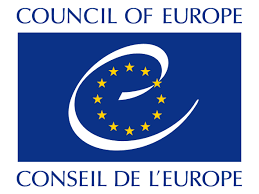It’s twenty five years since Armenia, Georgia and Azerbaijan – the Transcaucasian countries – came out from under Soviet rule and were able to develop their own independent public media. But twenty five years on, how are they dealing with the challenges of maintaining a credible system of public service media? The European Audiovisual Observatory, part of the Council of Europe in Strasbourg, has just relased a unique new report free to download here entitled Public service media in Transcaucasian countries.
This new IRIS Extra report is authored by Ekaterina Abashina, a researcher at Lomonosov Moscow State University. She opens by analysing the evolution of the public service broadcasting concept in Georgia, Armenia and Azerbaijan. Public service companies were first established in this region in the early 2000s, replacing the Soviet model state-run broadcasters.
Moving on to look at the governance of public service broadcasting, Abashina makes a useful comparison of the three systems. Common elements emerge from her analysis such as a declaration of commitment to public service broadcasting values through their stipulation in the relevant legal framework; the application of state funding, detailed regulation of appointment procedures of governing bodies and general content requirements (though these are formulated more as guidance principles).
The following chapter focuses on programming policies in these three countries. In the cases of Armenia and Azerbaijan their respective Boards are entitled to approve programming schedules and programme structures but they do not communicate these to the public and do not announce or present them in any way. The Georgian PSB Board issues quite a detailed and annually updated programming concept (“Programming Priorities”) – made available on the website of the broadcaster every year; the “Programming Priorities” of the Georgian PSB are indeed purely advisory in nature.
Read also
It is clear that the creation of PSB companies in Georgia, Armenia, and Azerbaijan was fostered by their joining the Council of Europe (CoE). The author focuses her penultimate chapter on the role of international organisations such as the CoE and the OSCE Representative on Freedom of the Media (OSCE RFOM). Their membership of the CoE has imposed upon these countries the adoption of or amendments to existing national broadcasting laws to incorporate the CoE principles on PSB. In addition, regular evaluative CoE reports are written about the media in all of their member states; although these rather play an interpretative and explanatory role for the regulation and operation of public broadcasting. For its part, the OSCE RFOM has designed specific recommendations for the development of PSB in this region and on the creation of an inter-regional platform for the exchange of ideas and experience on PSB practice within the region.
Abashina concludes that PSB in these countries has suffered from “common weak spots” such as “the lack of safeguards for the independence of PSB companies from political interests due to loopholes in appointment mechanisms for the governing bodies […]; unstable funding sources; lack of specific legal programming requirements; and absence of effective mechanisms of interaction with its audiences and audience research.” She does however underline the role of international organisations like the CoE and the OSCE who, while they cannot directly influence PSB systems, “are active and consistent promoters of PSB values and best practice in the Transcaucasian region.”
Tatiana BAEVA
Media Officer / Spokesperson
Directorate of Communications
Council of Europe






















































